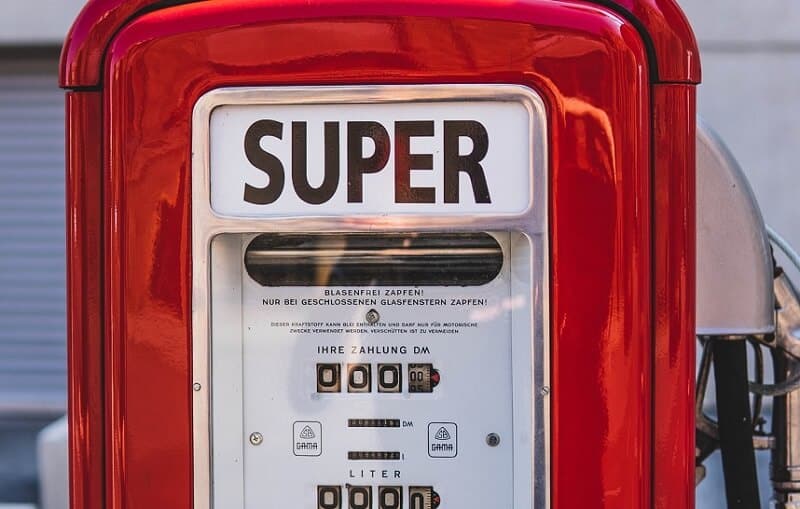
The principal objective of UGAZ is to increase the daily performance of UNG by 3 times. The main objective of DGAZ is to produce profits from the losses in the UNG fund.
For everyone who wants to trade UGAZ stock and DGAZ stock the essential part is understanding the nature of them.
First of all, there is no dilemma should you invest in or trade UGAZ stock and DGAZ stock. There is no such thing as investing in UGAZ stock or DGAZ stock. Forget them if you are an investor, they are not for a long haul. The expense ratio is 1.65% so it is more likely that you will have zero chances to be profitable if you try to invest in them. Let’s say this way, according to historical data, over a period of one year they had a negative return of almost 56% and the negativity is increasing as times go by. For three years, for example, you can lose around 90% of your investment.
So, to summarize, UGAZ stock and DGAZ stock is for short-term trading.
Catch the trends
Trading UGAZ stock and DGAZ stock can turn into a profitable project since you can efficiently track the supply and demand. So, it isn’t hard to catch the trends and make a fortune. Maybe not quite a fortune but a lot of money for sure.
Remember one extremely important thing linked to UGAZ stock and DGAZ stock trading: there is an extremely high risk involved. No one will recommend you trade them but still, there are so many traders doing so.
How to trade UGAZ stock and DGAZ stock?
Okay, let’s look into the Natural Gas Sector. For that, we have to get into UNG, which is the United States Natural Gas Fund. It is an ETF composed to give investors exposure to natural gas and it is a highly volatile fund to trade. If you don’t have a stomach, forget the profit gained from this trading. Modern portfolio theory says that UNG is a fantastic solution for traders who are 100% sure that natural prices are able to rebound. Anyway, traders have to track the prices of natural gas, weather reports (that will give you a view into supply and demand). Don’t be confused!
Cold weather suggests an increased demand for natural gas, hence the rising prices.
Is UGAZ an ETF?
There is a lot to misunderstand energy ETFs and ETNs (exchange-traded notes).
The main energy ETFs are The United States Natural Gas Fund (UNG) and The United States Oil Fund (USO). And there are leveraged energy ETNs that tracking natural gas prices. These cover the VelocityShares 3X Long Natural Gas ETN (UGAZ) and VelocityShares 3X Invest Natural Gas ETN (DGAZ).
Let’s make clear what is an energy ETF. It couples investments in oil, natural gas, and alternative energy. So, it isn’t hard to diversify your energy investment portfolio.
Supply and demand have a great influence on crude and natural gas prices. Their prices tend to fall when the supply is bigger than demand. When we have more supply than demand in the market, the prices will rise.
Politics and crises also can affect these prices. Any uncertainty on the political field such as wars, governmental changes or even tensions will send the crude oil price higher.
We mentioned the weather. The crude oil and natural gas prices will go higher when temperatures could cause a spike in price. But also, when the over the warm periods, when we have an increasing demand for cooling, the price of natural gas can rise.
How to trade UGAZ and DGAZ
Both UGAZ and DGAZ strictly watch UNG stock.
The principal target of UGAZ is to increase the daily performance of UNG by 300% or 3 times. For example, if UNG price raises 1%, UGAZ will manifest a daily gain of 3%. It is better to trade UGAZ when there is bullish sentiment on UNG.
The main objective of DGAZ is to produce profits from the losses in the UNG fund. DGAZ increases the losses by 300% inversely. For example, if UNG price drops by 1%, DGAZ will bring you a profit of 3%. Trade DGAZ when there is a bearish sentiment on the UNG fund.
It is obvious that UGAZ and DGAZ have 3:1 leverage. Great, because that might boost your profit. But, keep in mind, that profit is in direct proportion with the risk.
Trading UGAZ stock and DGAZ stock means to pay attention to the UNG fund. It is the prime ETF that handles UGAZ and DGAZ as leveraged ETFs. That will provide you a view into the direction that this market is going. You have to evaluate should you trade UGAZ or DGAZ because they will give you a profit for opposite moves.
UNG is really a difficult exchange-traded fund.
Firstly, natural gas is a very volatile stock. Further, UNG isn’t directly related to natural gas in the physical sense of it.
Moreover, it doesn’t pay dividends. It uses future contracts and OTC exchanges to detect the natural gas price. Despite the fact that UNG may not be a good investment, UGAZ and DGAZ may be a good fit. How is that? As we said before, UGAZ stock and DGAZ stock are not suitable for long-term investing. And since you will hold your position for a few days or less, you are not interested in dividends and moreover, if the UNG fund has long-term decline, that will not affect the short-term volatility.
How all of this work?
ETNs provide tripled leverage for one trading day. Let’s say the natural gas price increases by 3%, UGAZ will grow by 9% and DGAZ inversely will drop by 9%. That’s why trading UGAZ and DGAZ stock is for short-term traders only. If you plan to invest in them for the long-term, your chances to make a profit are zero.
Think about UGAZ and DGAZ as up-gas and down-gas. When the natural gas price is going up, it will like UGAZ. Hence, when the price is going down, you will profit from trading DGAZ. Simple!
Real-life example
On January 30, DGAZ traded $285.20 which was $18.88 more from the prior trading day. DGAZ stock rose by 6.62%.
It rose from $267.50 to $285.20 and gained 3 days in a row. Will it succeed to continue gaining or take a break for the next few days? We’ll see. Maybe the best example of how this stock is volatile shows the fact that during the trading day the stock oscillated 8.08%. A day low was at $271.09, a day high was at $293.00. In six of the past 10 days, the price up by almost 44%. But volume fell by almost 20.000 shares and it can be a sign that something is going to change in the next days. Falling volume is always a signal of such occasions.
The price of natural gas went lower over the past 3 months, above the 5-year average. Increasing sellings are noticed in the futures market. The current data was not bearish, but the market reacted negatively.
That is how UGAZ stock and DGAZ stock work.
Can you short UGAZ stock?
You can always go short with the leveraged ETF pairs. A popular strategy over the years has been: short both sides of a paired leveraged ETF or ETN, and get the cash. The point is to short the long position on leveraged ETF and short leveraged ETF for the same sum. After that, just watch how volatility can benefit you.
For instance, if we examine imaginary the leveraged ETFs associated with natural gas and we see one is down almost 55% over the last 12 months, while the other has fallen 75%. A trader can short both sides for, let’s say $10,000 each, they easily could find themselves up to $12,900 off the $20,000 total short position. That’s a pretty good gain.
This is true most of the time. But you have to guess the right time frame. Of course, it is always a matter of how fat your account is. Everyone who can stay in the game long enough will be a winner. But it is a big challenge.
Shorting both sides isn’t an easy money way. Shorting makes sense only if you do it with a small part of your portfolio and you have a lot of cash. In any other case, it can be extremely dangerous when shorting both sides of a leveraged ETF.



Leave a Reply